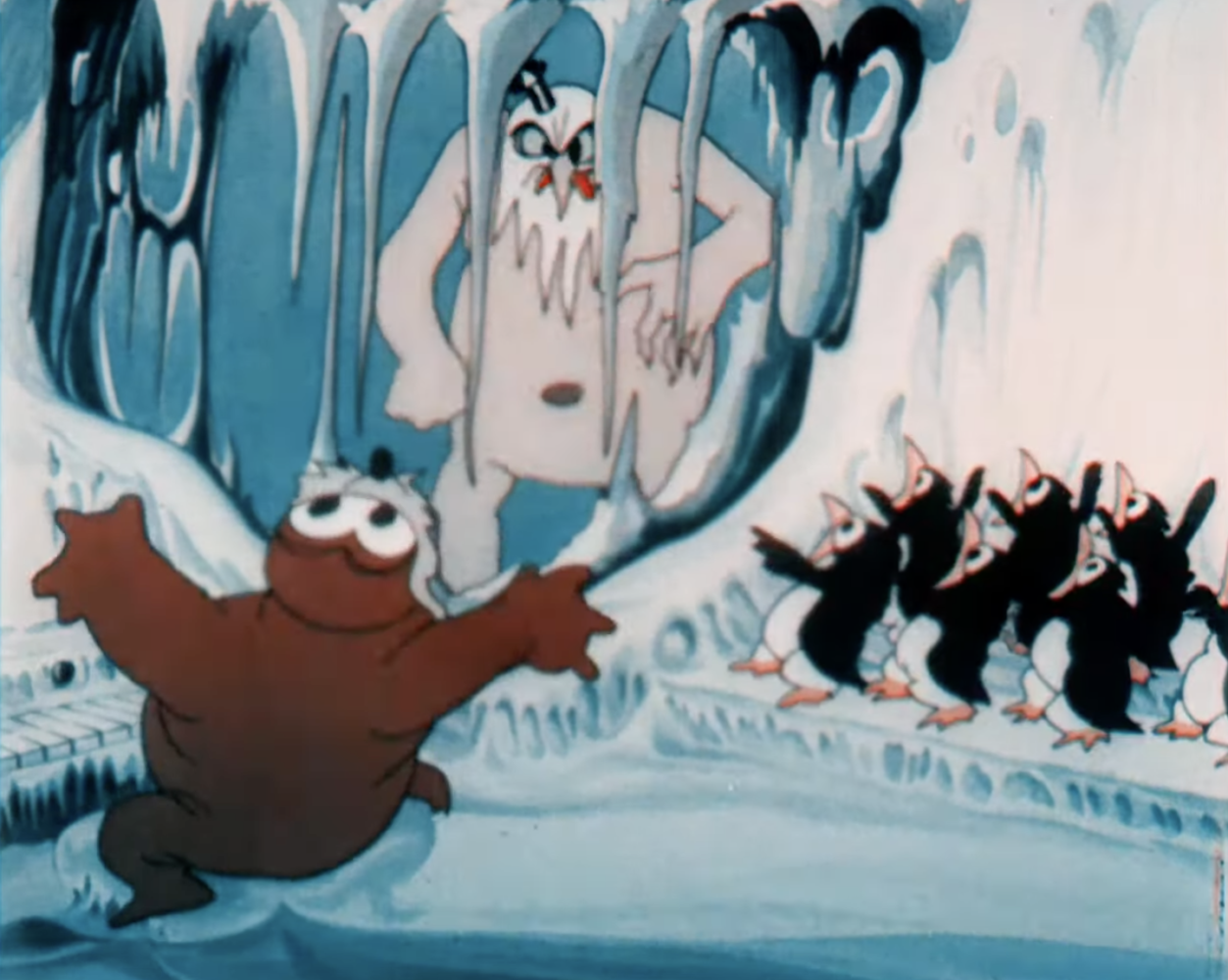
Frostbitten Frames: Animated Films of the 20s and 30s
As part of HarborFrost 2024, Sag Harbor Cinema will be showing our traditional Frostbitten Frames in the vitrines during the celebration – this year, winter-themed animations from the 20s and 30s. The eight shorts are part of a rich history of animation in America when studios like Disney and Fleischer were competing for the top talent to create clever stories with gorgeous imagery and bespoke score, while trying to stay on the cutting edge of technology. Read more about the Golden Age of Animation through the history behind the shorts below:
Snow-White (1933): Fleischer Studios, the chief competitor of Disney in animated films in the 1930s, animated many still-beloved animated characters like Betty Boop, Popeye the Sailor, and Superman. Fleishcher stands apart from Disney, not only in the use of human characters rather than animals, but also in their artistic, gritty, surrealist style often dealing with more adult subjects. It has been cited that the ghost’s dance in Snow-White, which was rotoscoped from footage of jazz artist Cab Calloway, is one of the earliest versions of the “moonwalk” which Calloway called “The Buzz.” Snow-White has been deemed “culturally significant” by the United States Library of Congress and selected for preservation in the National Film Registry.
Peeping Penguins (1937): Another Fleischer creation, Peeping Penguins is part of the studio’s Color Classics series comprising 36 animated shorts made between 1934 to 1941. The earliest shorts were filmed in Two-Color Technicolor because Disney held an exclusive agreement with Technicolor for their Three-Color process until 1935 when Fleischer was able to upgrade. Fleischer is also known for their use of the Stereoptical Process which allowed animation cels to be photographed against 3D backgrounds instead of paintings – a technology Disney would not catch up to for three years.
Mutt and Jeff – Skating Instructors (1926): Between 1916 and 1926 Barré Studio created 292 animated Mutt and Jeff shorts, originally a much adored newspaper comic strip created by Bud Fisher in 1907. One of the pioneers of daily comic strips, Mutt and Jeff features two recurring characters in multiple panels on a six-day-a week schedule. Fisher’s “two mismatched tinhorns” remained in syndication until 1983.

Silly Symphony: Winter (1930): Winter is one of the 75 animated musicals in the “Silly Symphonies” shorts produced by Disney in the 1930s, at the suggestion of composer Carl Stalling. This series is notable as Disney’s testing ground for new techniques in animation – like Technicolor – and was the key to Disney’s plans for feature-length animation. Director Burt Gillet, whose filmography includes over 100 animated shorts, would go on to win two Academy Awards in Best Animated Short Film for Flowers and Trees (1932) and Three Little Pigs (1933).
Big Man from the North (1931): Big Man from the North is one of the earliest Looney Tunes produced at the start of the Warner Bros. animation franchise in the 1930s. Directed by Hugh Harman and Rudolf Ising (the chief directors of Looney Tunes during that era), BMFTN features Bosko, an animated character created by Harman & Ising who starred in 39 animated shorts. Bosko is a landmark in animation history as the first cartoon to use synchronized speech.
Jack Frost (1934): Ub Iwerks was one of Disney’s first animators and is famous for co-creating Mickey Mouse with Disney before leaving to form his own studio in 1930. Between 1933 and 1936, Iwerks created 25 animated shorts in a ComiColor Cartoons series mostly based on popular fairy tales, including Jack Frost. Jazz artist Cab Calloway, a common reference for animators, most certainly was the inspiration for the scarecrow’s dance number.

The Playful Polar Bears (1938): The Playful Polar Bears is animated short by Fleischer Studios in their Color Classics series. It stars Jack Mercer (the voice of Popeye) and Mae Quetel (the voice of Betty Boop) as Papa and Mama Bear.
The Snowman (1933): The director of The Snowman Ted Eshbaugh was one of the first to experiment with color sound cartoons in the early 1930s perfecting the color process using Multicolor. He hoped to collaborate with Technicolor to do a series of The Wizard of Oz and “Musicolor Fantasties,” but due to Disneys’ exclusive deal with the color house only one short of Oz and one short of the “Musicolor Fantasies” (The Snowman) were ever completed. Composer Carl Stalling, who had moved from Disney to Warner Bros. to work on Looney Tunes in 1930, scored the music to The Snowman along with over 700 other animated films for which he composed music from 1928 until his death in 1958. At one point, Stalling averaged one score per week over a 22 year period and is credited, along with Max Steiner and Scott Bradley, with introducing the ‘click track’ method for synching score to animation.

